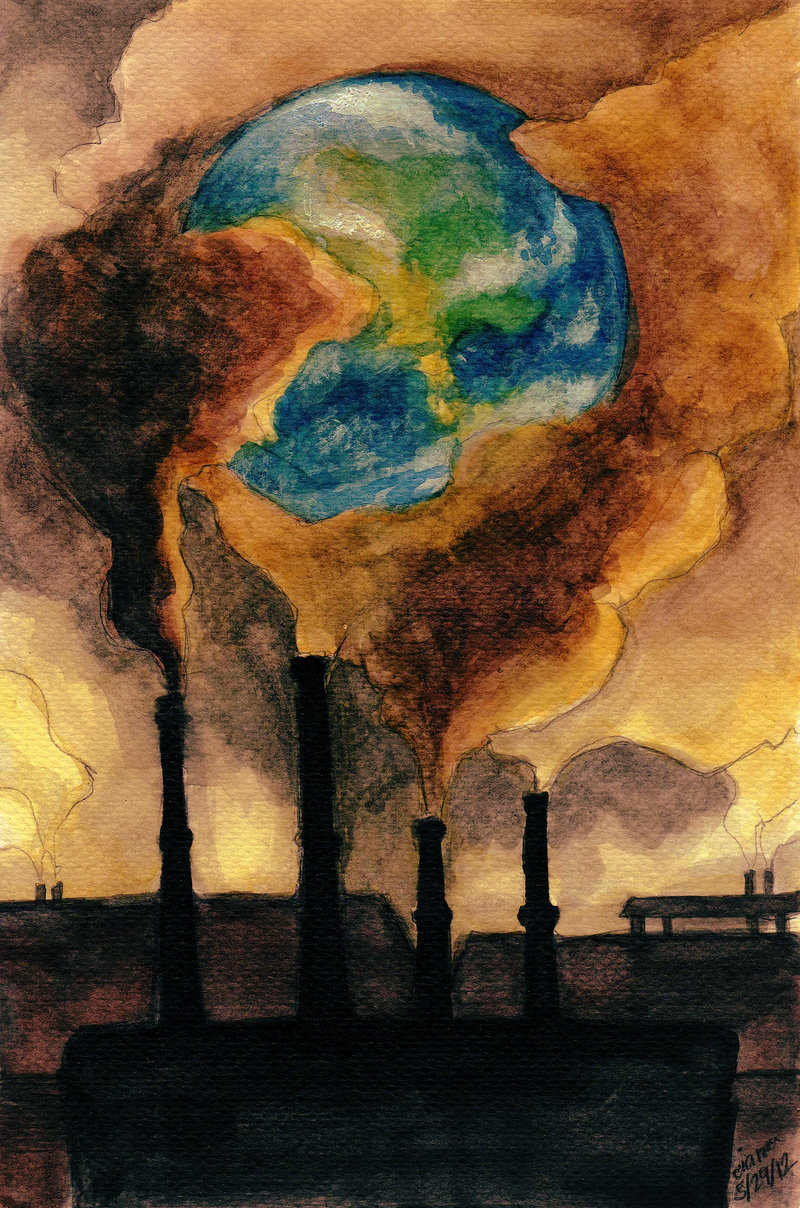Heavy-heat again this Wednesday afternoon here in California’s Central Valley, though, we’re not sweltering alone — seemingly the whole freaking world is boiling.
The Pacific Northwest and BC Canada are catching the top-crust warmth with another ‘heat-dome attack‘ driving temperatures to massive heights, while seemingly near-in concert, another ‘dome’ act is scorching the eastern US, and just to have an overall global perspective, today temperatures on the Italian island of Sicily hit 119.8-degrees, the hottest ever for Europe.
And an odd note (BBC): ‘The latest heatwave in Italy is being caused by an anticyclone — nicknamed Lucifer — moving up from Africa.‘
Whoa! Climate and the accompanying weather have indeed become a nefarious entity of great destruction. And a warming environment spells trouble:
Around 195 million Americans are under a watch/warning/advisory for dangerous heat. Yes, it's summer, but this type of heat can kill. Avoid strenuous activity during the midday, and bring along extra hydration, even if just going about normal business. https://t.co/asAP0ZR0oK pic.twitter.com/v3NXefjLmy
— National Weather Service (@NWS) August 11, 2021
A heatwave again — summary via The Washington Post this morning:
Punishing heat waves are roasting the Pacific Northwest and the central and eastern United States simultaneously, placing more than half of the Lower 48 states under alerts from the National Weather Service. Excessive-heat warnings or heat advisories are in place for nearly 175 million Americans, and some of these alerts will remain in effect until the weekend.
The most intense heat is set to roast the Pacific Northwest, which has already endured several blasts of abnormally high temperatures this summer, including the “unprecedented” event in late June when temperatures in Portland, Ore., soared to 116 degrees and Seattle hit 108, both all-time highs.
Portland and Seattle are again under an excessive-heat warning, which covers much of western Oregon and Washington state. It also extends into parts of Northern California, home to the Dixie Fire, the state’s second-largest blaze on record.In the central and eastern United States, a sprawling area of heat advisories covers the zone from eastern Texas to southeastern Michigan and large parts of the Mid-Atlantic and Northeast along the Interstate 95 corridor and parts of the interior New England.
Cities under heat advisories include Little Rock, Chicago, Detroit, Raleigh, N.C., Washington and Boston. Several excessive-heat warnings, for even more extreme conditions, are embedded within these heat advisory zones and include Kansas City, St. Louis, New York City and Philadelphia, where city asphalt and concrete, or urban heat island effect, make temperatures even hotter.The dual heat waves are due to a pair of high-pressure systems or heat domes flanking both U.S. coastlines.
One is moving into the Pacific Northwest and British Columbia from the eastern Pacific, while a second flanks the Southeast U.S. coast and is pumping hot air westward and northward.Climate change is intensifying the frequency and intensity of extreme heat as increasing concentrations of greenhouse gases from fossil fuel burning warm the atmosphere.
On Monday, the landmark review of climate science from the Intergovernmental Panel on Climate Change warned that exceptional heat events will strengthen in the coming decades.
Meaning it’s just going to get worse.
Temperatures in places that should be cold, or at least not hot, are baking — like Siberia, a region of nothing but chilly, has seen triple-digit temperatures the last couple of years, which has led to some horrifying forest fires — from LiveScience, also this morning:
Smoke from massive wildfires in Russia’s Siberia region has reached the geographic North Pole “for the first time in recorded history,” according to NASA — while the forest blazes themselves are bigger than all the other wildfires currently burning in the world combined, one expert said.
The U.S space agency published a photograph Saturday (Aug. 7) from one of its satellites that shows the acrid blanket of smoke stretching more than 3,000 miles (4,800 kilometers), from the Yakutia region in the northeast of Siberia up to the North Pole. According to their records, this may be the first time this has ever happened.
Wildfires occur every summer in the heavily forested region — a landscape known as the taiga — but this year has been especially bad.
…
NASA estimated the cloud of smoke from the wildfires measured more than 2,000 miles (3,200 km) from east to west and 2,500 miles (4,000 km) from north to south.
The Chinese news agency Xinhua reported that the smoke could be seen in the sky above Ulaanbaatar in Mongolia, more than 1,200 miles (2,000 km) away.
As a point of the nowadays, and those terrible forest fires in Greece: ‘The World Meteorological Organization said that the fires, which have blocked out the sun amid the hottest weather Greece has seen for 30 years, are part of a chain of extreme weather caused by climate change as a result of human behavior.‘
Just as a reminder…
 (Illustration out front found here).
(Illustration out front found here).